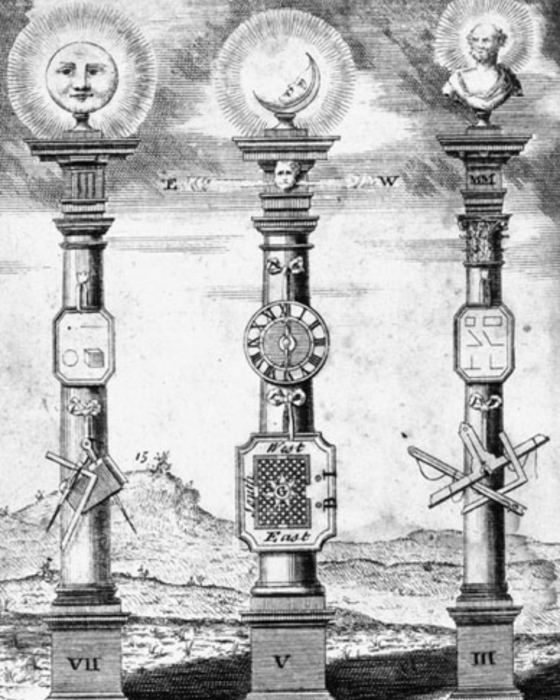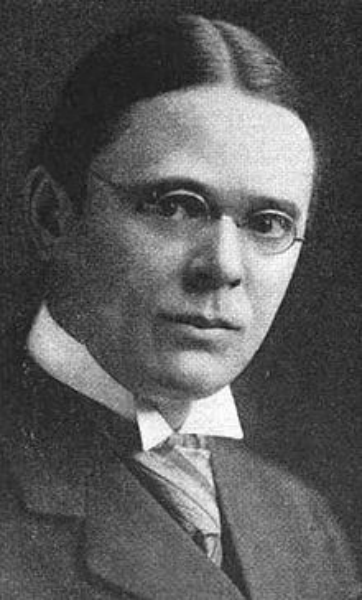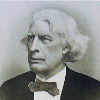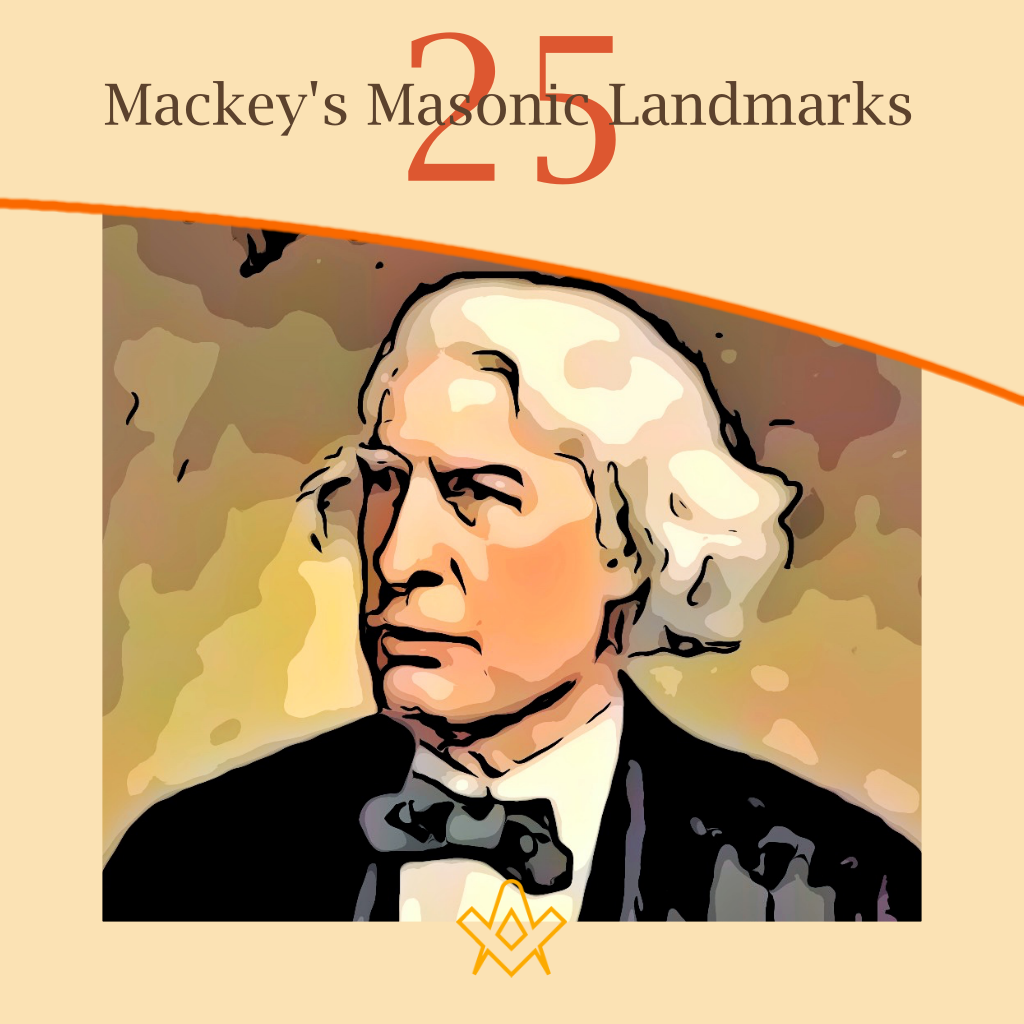“The first great duty, not only of every lodge, but of every Mason, is to see that the landmarks of the Order shall never be impaired.”
— Albert Mackey (1856), The Principles of Masonic Law
Masonic landmarks are a set of principles that many Freemasons claim to be ancient and unchangeable precepts of Masonry. Issues of the “regularity” of a Freemasonic Lodge, Grand Lodge or Grand Orient are judged in the context of the landmarks.
Because each Grand Lodge is self-governing, with no single body exercising authority over the whole of Freemasonry, the interpretations of these principles can and do vary, leading to controversies of recognition.
Different Masonic jurisdictions have different landmarks. [1]

IMAGE LINKED: wikimedia Attribution 4.0 International (CC BY 4.0)
According to Percy Jantz, the Masonic term landmark has biblical origins.
He cites the Book of Proverbs 22:28: “Remove not the ancient landmark which thy fathers have set”, referring to stone pillars set to mark boundaries of land.
He further quotes a Jewish law: “Thou shalt not remove thy neighbors’ landmark, which they of old time have set in thine inheritance” to emphasize how these Landmarks designate inheritance. [2]
Albert Mackey Expands on the above historical significance of landmarks: “The universal language and the universal laws of masonry are landmarks, but not so are the local ceremonies, laws, and usages, which vary in different countries. To attempt to alter or remove these sacred landmarks…is one of the most heinous offences that a Mason can commit. [3]
Mark Tabbert believes that the actual rules and regulations laid down in the early masonic landmarks derive from the charges of medieval stonemasons. [4]
According to the General Regulations published by the Premier Grand Lodge of England in 1723 “Every Annual Grand Lodge has an inherent power and Authority to make new Regulations or to alter these, for the real benefits of this Ancient Fraternity; provided always that the old Land-Marks be carefully preserved.”
However, these landmarks were not defined in any manner. In 1844, George Oliver wrote that some jurisdictions restrict the definition of a Masonic landmark to be only the “signs, tokens and words” while others include the ceremonies of initiation, passing, and raising of a candidate.
Some also include the ornaments, furniture, and jewels of a Lodge, or their characteristic symbols. [5]
In 1863, Oliver published the Freemason’s Treasury in which he listed 40 landmarks.
Mackey expanded on both of these lists and remarked that the safest method of defining the landmarks is “those ancient, and therefore universal, customs of the order, which either gradually grew into operation as rules of action, or, if at once enacted by any competent authority, were enacted at a period so remote, that no account of their origin is to be found in the records of history.”
Mackey’s 25 Landmarks
The first major attempt to define the landmarks of Freemasonry was in 1858, when Albert Mackey (1807-1881) defined 25 landmarks in total: [6]
- The fraternal modes of recognition
- The division of Masonry into 3 symbolic degrees
- The symbolic legend of Hiram Abiff
- The government of the fraternity by a Grand Master
- The prerogative of the Grand Master to preside over every assembly of the craft
- The prerogative of the Grand Master to issue dispensations for conferring degrees at irregular times
- The prerogative of the Grand Master to issue dispensations for opening and holding Lodges otherwise not established
- The prerogative of the Grand Master to make Masons at Sight [7]
- The necessity for Masons to congregate in Lodges
- The government of Lodges to be by a Master and two Wardens
- The necessity that every Lodge when congregated be duly tiled
- The right of every Mason to be represented in all general meetings of the Craft
- The right of every Mason to appeal from his Lodge’s decisions to the Grand Lodge
- The right of every Mason to sit in every regular Lodge
- That no unknown visitor be allowed to sit in Lodge without being examined and found to be a Freemason
- That no Lodge can interfere in the business of another Lodge
- That every Freemason be amenable to the laws and regulations of the Jurisdiction in which he resides
- That candidates for Freemasonry be required to meet certain qualifications; namely: being of mature age, not a cripple, and free born.
- That a belief in the existence of God be a requirement for membership
- That belief in a resurrection to a future life be a requirement for membership
- That a “Book of the Law” shall constitute an indispensable part of the furniture of every Lodge
- The equality of Masons [8]
- The secrecy of the Institution
- The foundation of a speculative science upon an operative art, and the symbolic use and explanation of the terms of that art for purposes of moral teaching
- That none of these landmarks can be changed.
Pound’s Seven Landmarks

Roscoe Pound (1870-1964) American Masonic and Legal Scholar, educator.
IMAGE LINKED: wikimedia Attribution 4.0 International (CC BY 4.0)
In 1911, understanding Mackey’s 25 points to be a summary of Masonic “common law”, the legal scholar Roscoe Pound (1870-1964) distinguished seven of them as landmarks: [9]
- Belief in a Supreme Being (19)
- Belief in immortality (20)
- That a “book of sacred law” is an indispensable part of the “furniture” (or furnishings) of the Lodge (21)
- The legend of the Third Degree (3)
- Secrecy (not specifying as to what) (11, 23)
- Symbolism of operative masonry (24)
- That a Mason must be a man, freeborn, and of lawful age (18)
In the last century, several American Grand Lodges attempted to enumerate the landmarks, ranging from West Virginia (7) and New Jersey (10) to Nevada (39) and Kentucky (54). [10]
In the 1950s the Commission on Information for Recognition of the Conference of Grand Masters of Masons in North America upheld three “ancient landmarks”: [11], [12]
- Monotheism — An unalterable and continuing belief in God.
- The Volume of The Sacred Law — an essential part of the furniture of the Lodge.
- Prohibition of the discussion of Religion and Politics (within the lodge).
Text reproduced from Wikipedia. Credit: Wikipedia contributors. (2022, August 1). ‘Masonic Landmarks’.
In Wikipedia, The Free Encyclopedia. Retrieved 13:01, August 5, 2022, from https://en.wikipedia.org/w/index.php?title=Masonic_Landmarks&oldid=1101643694
Article by: Albert G. Mackey

Albert Gallatin Mackey (1807 – 1881) was an American medical doctor and author.
He is best known for his books and articles about freemasonry, particularly the Masonic Landmarks.
In 1849 he established The Southern and Western Masonic Miscellany, a weekly masonic magazine.
He served as Grand Lecturer and Grand Secretary of The Grand Lodge of South Carolina, as well as Secretary General of the Supreme Council of the Ancient and Accepted Scottish Rite for the Southern Jurisdiction of the United States
Recent Articles: symbolism
 Legends and Symbols in Masonic Instruction Explore the significance of Masonic legends and symbols in this insightful post. Discover how Freemasonry imparts wisdom through allegorical narratives and emblematic imagery, revealing profound moral and philosophical lessons. Unveil the deep connections between Masonic teachings and the broader quest for understanding life’s fundamental questions. |
 Discover the mystical significance of the number 33. From its mathematical marvels and artistic influence in numerology to its esteemed place in Freemasonry, delve into the history and power of this master number. Explore why 33 holds such profound meaning in various spiritual and philosophical traditions. |
 The Practice of Freemasonry - P1 Embark on a transformative journey with Freemasonry, where the exploration of your Center unlocks the Perfect Ashlar within. Through the practices of Brotherly Love, Relief, Truth, and Cardinal Virtues, discover a path of enlightenment and self-improvement. Embrace the universal creed that binds us in the pursuit of our true essence. |
 Discover the fascinating history and significance of the Warrant of Constitution within Freemasonry. Unveil the evolution of this crucial authorization, its role in legitimizing Lodges, and its lasting impact on the global brotherhood of Freemasons. Explore the intricate link it provides between tradition and modern practice. |
 Freemasonry: Unravelling the Complexity of an Influential Organization Mysterious and captivating, Freemasonry has piqued the interest of seekers and skeptics alike. With its intricate blend of politics, esotericism, science, and religion, this enigmatic organization has left an indelible mark on society. Prepare to delve into the secrets of Freemasonry and unlock its hidden depths. |
 Unlocking the Mysteries of Freemasonry: In the hallowed halls of Freemasonry, a powerful symbol lies at the heart of ancient rituals and teachings—the Volume of the Sacred Law. This sacred book not only guides the spiritual and moral journey of Freemasons but also serves as a beacon of universal wisdom and enlightenment. |
 The Ancient Liberal Arts in Freemasonry Embark on a journey of self-improvement and wisdom with Freemasonry's guiding principles. Ascend the winding stairs of moral cultivation, analytical reasoning, and philosophical understanding. Embrace arithmetic's mystical properties and geometry's universal truths. Let the harmony of the universe inspire unity and growth. Discover the profound, hidden knowledge in Freemasonry's path to enlightenment. |
 Initiation rituals around the world are filled with fascinating elements and different images. One of them is that of darkness. When societies speak of darkness, they often mean a lack of knowledge, a lack of choice, or a symbol of evil. During initiation rituals, darkness is used to represent the initiate's lack of knowledge about the world, society, and initiation in general. It can also represent the initiate's inability to make a choice or endure a situation. Whether you have participated in an initiation rite or not, the meaning of darkness remains an intriguing concept worth exploring. Initiation rituals around the world are filled with fascinating elements and different images. One of them is that of darkness. When societies speak of darkness, they often mean a lack of knowledge, a lack of choice, or a symbol of evil. During initiation rituals, darkness is used to represent the initiate's lack of knowledge about the world, society, and initiation in general. It can also represent the initiate's inability to make a choice or endure a situation. Whether you have participated in an initiation rite or not, the meaning of darkness remains an intriguing concept worth exploring. |
 Masonic Deacon rods potentially trace their origins to Greek antiquity, symbolically linked to Hermes' caduceus. As Hermes bridged gods and mortals with messages, so do Masonic Deacons within the lodge, reinforcing their roles through ancient emblems. This connection underscores a profound narrative, weaving the fabric of Masonic rites with the threads of mythological heritage, suggesting the rods are not mere tools but bearers of deeper, sacred meanings that resonate with the guardianship and communicative essence of their divine counterpart, Hermes, reflecting a timeless lineage from myth to Masonic tradition. |
 The biblical pillars erected by Solomon at the Temple's porch, hold a profound place in history. These brass behemoths are not mere decorations; they are symbols of strength, establishment, and divine guidance. Explore their fascinating construction, dimensions, and the deep meanings they carry in both biblical and Masonic contexts. |
 Unlocking the Mind's Potential: Dive deep into ground breaking research revealing how simple daily habits can supercharge cognitive abilities. Discover the untapped power within and redefine your limits. Join us on this enlightening journey and transform your world! |
 Dive deep into the symbolic importance of the trowel in Masonry, representing unity and brotherly love. From its historical roots in operative masonry to its significance in speculative masonry, this article explores the trowel's multifaceted role. Discover its connection to the sword, the story of Nehemiah, and the Society of the Trowel in Renaissance Florence. Unravel the layers of meaning behind this enduring Masonic symbol. |
 Symbolism of The Builder's Jewel Batty Langley's "The Builder’s Jewel" (1741) is a visual masterpiece of Masonic symbolism, showcasing Langley's deep understanding of Freemasonry. The frontispiece highlights key symbols like the three pillars and the legend of Hiram Abiff, emphasizing Langley's dedication to Masonic traditions and teachings. |
 Unveil the mystique of the colour blue in Masonic symbolism. A hue evoking universal friendship and benevolence, its roots span ancient cultures, infusing Freemasonry's core values. This article explores blue's profound significance, guiding Freemasons towards wisdom and spiritual enlightenment. Discover the fascinating journey of this universal symbol. |
 Discover the intriguing world of the plumb in Masonic symbolism with our in-depth analysis. Uncover its rich history, moral teachings, and significance in Freemasonry, guiding members on their path to truth, integrity, and justice. Immerse yourself in the captivating power of this symbol that shapes lives within the brotherhood. |
 Unlock the mysteries of Freemasonry with 'The Key,' a profound Masonic symbol. This seemingly simple instrument holds a deeper meaning, teaching virtues of silence and integrity. Explore its ancient roots, from Sophocles to the mysteries of Isis, and discover how it symbolizes the opening of the heart for judgment. |
 Unlock the secrets of the Freemasonry with The Blazing Star - a symbol that holds immense significance in their rituals and practices. Delve into its history, meaning and role in the different degrees of Freemasonry with expert insights from the Encyclopedia of Freemasonry by Albert Mackey. Discover the mystique of The Blazing Star today! |
 There is no symbol more significant in its meaning, more versatile in its application, or more pervasive throughout the entire Freemasonry system than the triangle. Therefore, an examination of it cannot fail to be interesting to a Masonic student. Extract from Encyclopedia of Freemasonry by Albert Mackey |
 The Hiramic Legend and the Myth of Osiris Hiram Abiff, the chief architect of Solomon’s Temple, is a figure of great importance to Craft Freemasonry, as its legend serves as the foundation of the Third Degree or that of a Master Mason. He is the central figure of an allegory that has the role of teaching the Initiate valuable alchemical lessons. Although his legend is anchored in biblical times, it may have much older roots. |
 This rite of investiture, or the placing upon the aspirant some garment, as an indication of his appropriate preparation for the ceremonies in which he was about to engage, prevailed in all the ancient initiations. Extract from The Symbolism of Freemasonry by Albert G. Mackey |
 The All-Seeing Eye of God, also known as the Eye of Providence, is a representation of the divine providence in which the eye of God watches over humanity. It frequently portrays an eye that is enclosed in a triangle and surrounded by rays of light or splendour. |
 What's in a Word, Sign or Token? Why do Freemasons use passwords, signs, and tokens? As Freemasons we know and understand the passwords, signs and tokens (including grips), which are all used a mode of recognition between members of the fraternity. |
 A Temple of Living Stones: Examining the Concept of a Chain of Union What are the origins of the Chain of Union? And how did they come about ? The answers may surprise some members as W Brother Andrew Hammer investigates, author of Observing the Craft: The Pursuit of Excellence in Masonic Labour and Observance. |
 One of the best loved stories for the festive season is ‘A Christmas Carol’. A traditional ghost story for retelling around the fire on a cold Christmas Eve, it is a timeless classic beloved by those from all walks of life. Philippa explores the masonic allegory connections… |
 The Trowel - Working Tool of the Master Mason The Trowel is the symbol of that which has power to bind men together – the cement is brotherhood and fellowship. |
 Two Perpendicular Parallel Lines The point within a circle embordered by two perpendicular parallel lines, with the Holy Bible resting on the circle, is one of the most recognizable symbols in Freemasonry. It is also one which always raises a question. How can two lines be both perpendicular and parallel? |
 "The first great duty, not only of every lodge, but of every Mason, is to see that the landmarks of the Order shall never be impaired." — Albert Mackey (1856) |
 It is common knowledge that the ancient wages of a Fellowcraft Mason consisted of corn, wine, and oil. |
 “Do not come any closer,” God said. “Take off your sandals, for the place where you are standing is holy ground.” Exodus 3:5 |
 The Secret Language of the Stone Masons We know of Masons' Marks but lesser known are the 'argots' used by the artisans - in part 2 of a series on the social history of the Operative Masons we learn how the use of secret languages added to the mystery of the Guilds. |
 The phrase appears in the Regius Poem. It is customary in contemporary English to end prayers with a hearty “Amen,” a word meaning “So be it.” It is a Latin word derived from the Hebrew word - Short Talk Bulletin - Vol. V June, 1927, No.6 |
 Egypt's 'Place of Truth' - The First Operative Stone Masons' Guild? Was ancient Egypt's 'village of the artisans' the first operative stone masons' guild? And was their use of 'identity marks' a forerunner of the Mason's Marks of the cathedral builders of the Middle Ages? Read on for some possible answers… |
 The Pieces of Architecture and the Origin of Masonic Study Discover the journey of the Apprentice – from Operative to Speculative. This journey has been carried out since the times of operative Freemasonry but today the initiate works in the construction of his inner temple. |
 The Builders' Rites - laying the foundations operatively and speculatively The cornerstone (also ‘foundation’ or ‘setting’ stone) is the first stone to be set in the construction of the foundations of a building; every other stone is set in reference to this. |
 Applying the working tools to achieve our peculiar system of morality. |
 We take an in-depth look at the 47th Proposition of the 1st Book of Euclid as part of the jewel of the Past Master. |
 The Cable Tow: Its Origins, Symbolism, & Significance for Freemasons - Unbinding the significance of the cable tow. |
 We examine at one of the most impressive moments of the initiatory ceremony, a certain rite known as Circumambulation, and ask what is its meaning and purpose ? |
 So, what is the Level? And why do we use it in Freemasonry? |
 What is the mysterious pigpen or Masonic cipher that has been used for centuries to hide secrets and rituals? |
 The Story of the Royal Arch - The Mark Degree Extracted from William Harvey's 'The Story of the Royal Arch' - Part 1 describes the Mark Degree, including the Working Tools. |
 Ashlars - Rough, Smooth - Story of a Stone How we can apply the rough and smooth Ashlars with-in a masonic context |
 A detailed look at the Chamber of Reflection: A Revitalized and Misunderstood Masonic Practice. |
 Exploring the origin and symbolism of Faith, Hope and Charity |
 The Noachite Legend and the Craft What is it to be a true Noachidae, and what is the Noachite Legend and the Craft ? |
 In Masonic rituals, Jacob’s ladder is understood as a stairway, a passage from this world to the Heavens. |
 What is the meaning of the Acacia and where did it originate ? |
 What is the connection with the Feasts of St John and Freemasonry |
 The Forget-Me-Not and the Poppy - two symbols to remind us to 'never forget' those who died during the two World Wars. |
 Biblical history surrounding the two pillars that stood at the entrance to King Solomon's Temple |
 Is there a direct link between Judaism and Freemasonry? |
 The symbolism of the beehive in Masonry and its association with omphalos stones and the sacred feminine. |
 The Wages of an Entered Apprentice |
 An explanation of the North East corner charge which explores beyond one meaning Charity - |
 A brief look at the origins of the two headed eagle, probably the most ornamental and most ostentatious feature of the Supreme Council 33rd Degree Ancient and Accepted (Scottish ) Rite |
 A Muslim is reminded of his universal duties just as a Freemason. A Masonic Interpretation of the Quran's First Two Chapters |
 The three Latin words -{Listen, Observe, Be Silent}. A good moto for the wise freemason |
masonic knowledge
to be a better citizen of the world
share the square with two brothers

click image to open email app on mobile device








